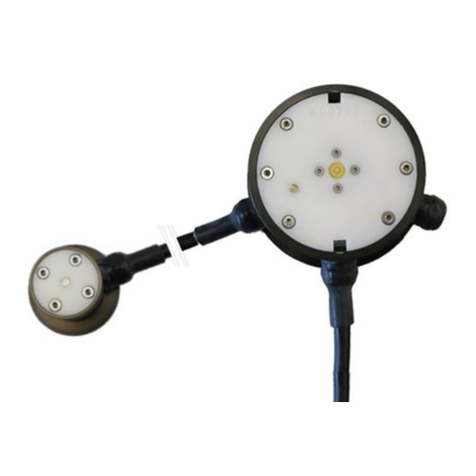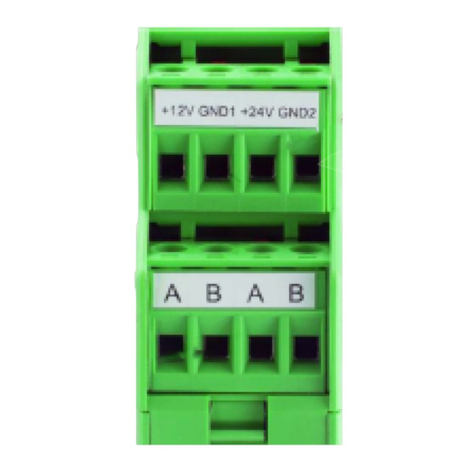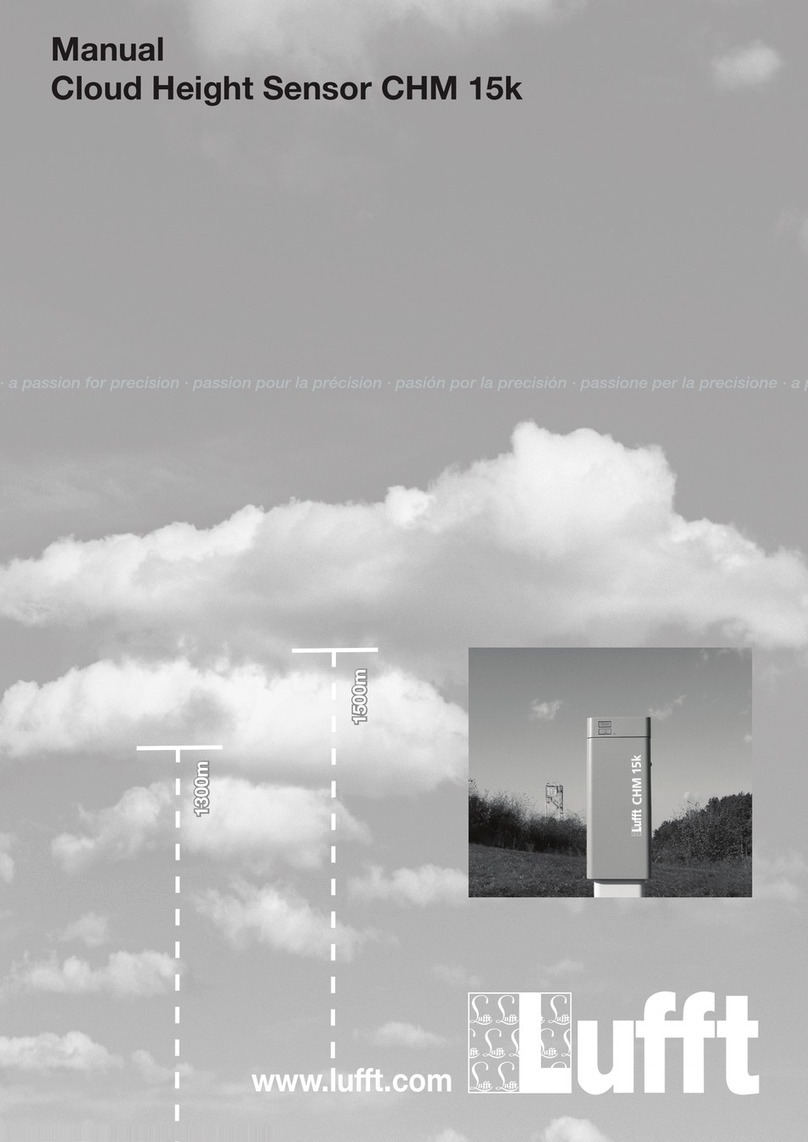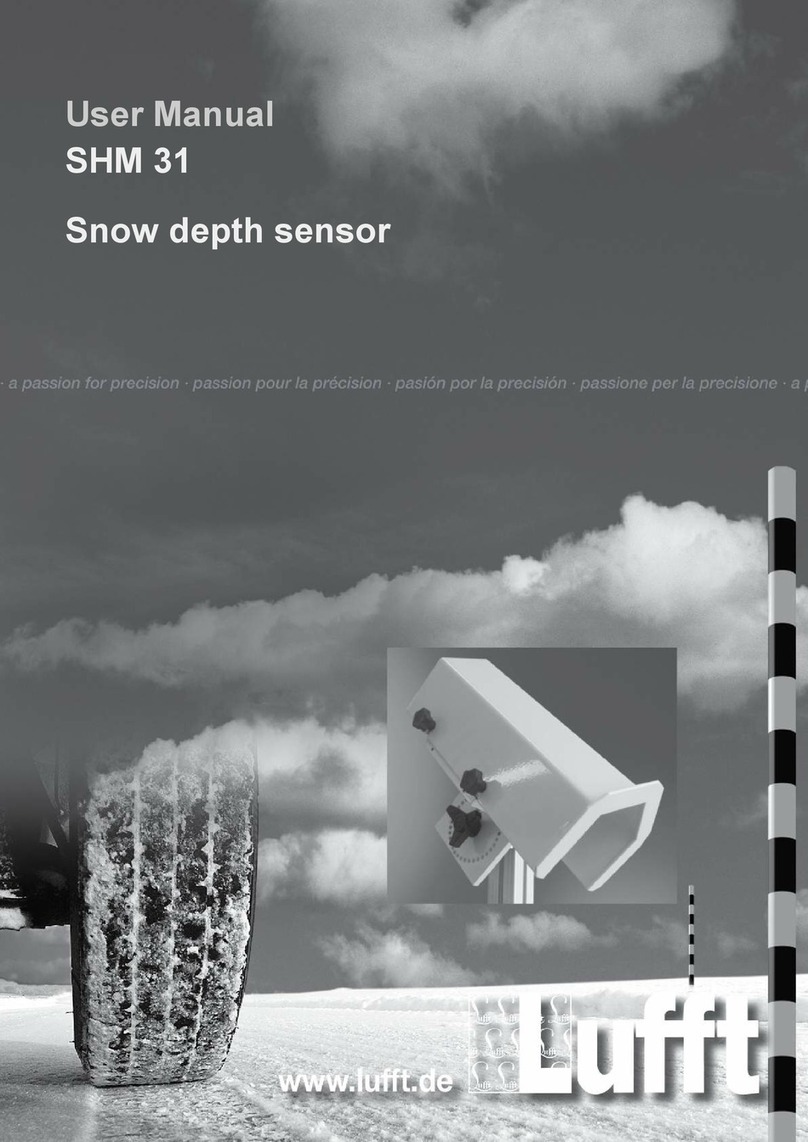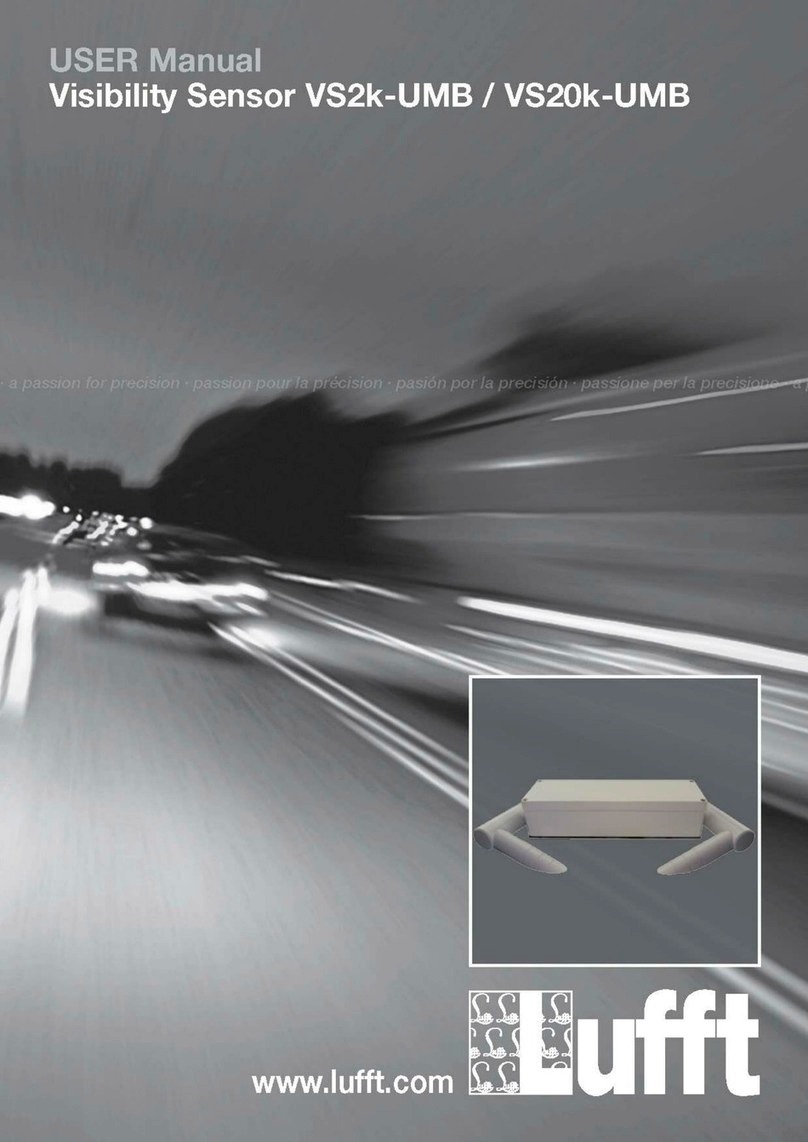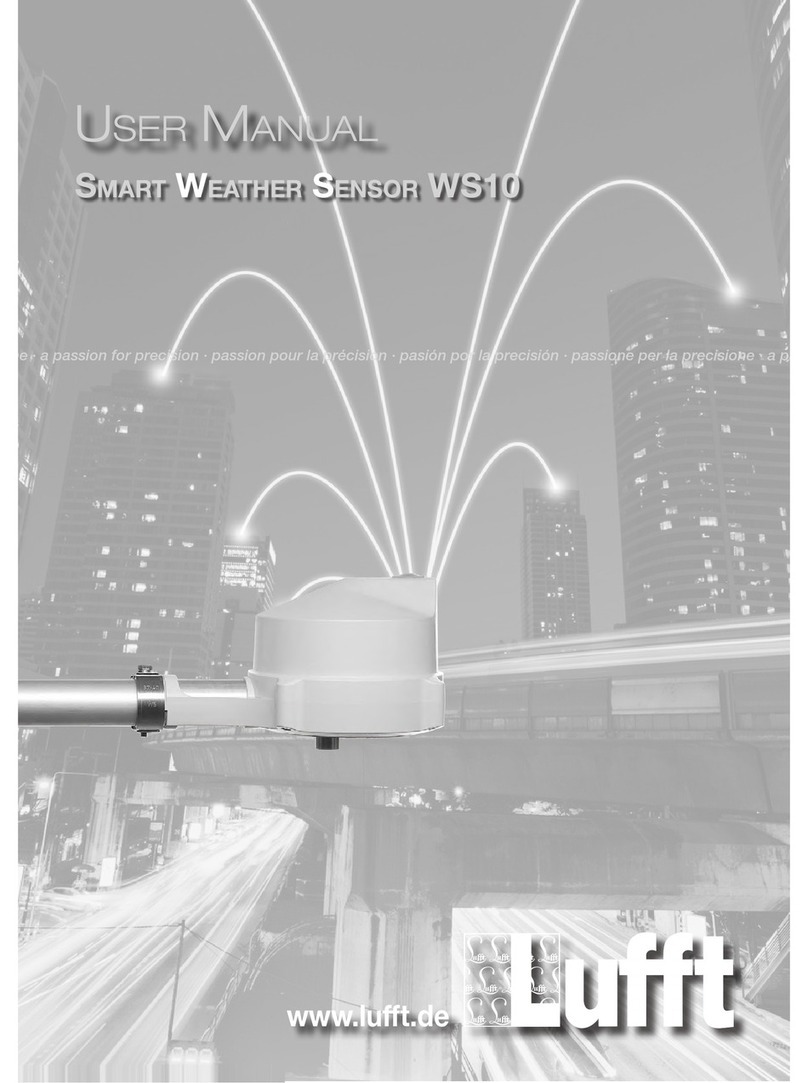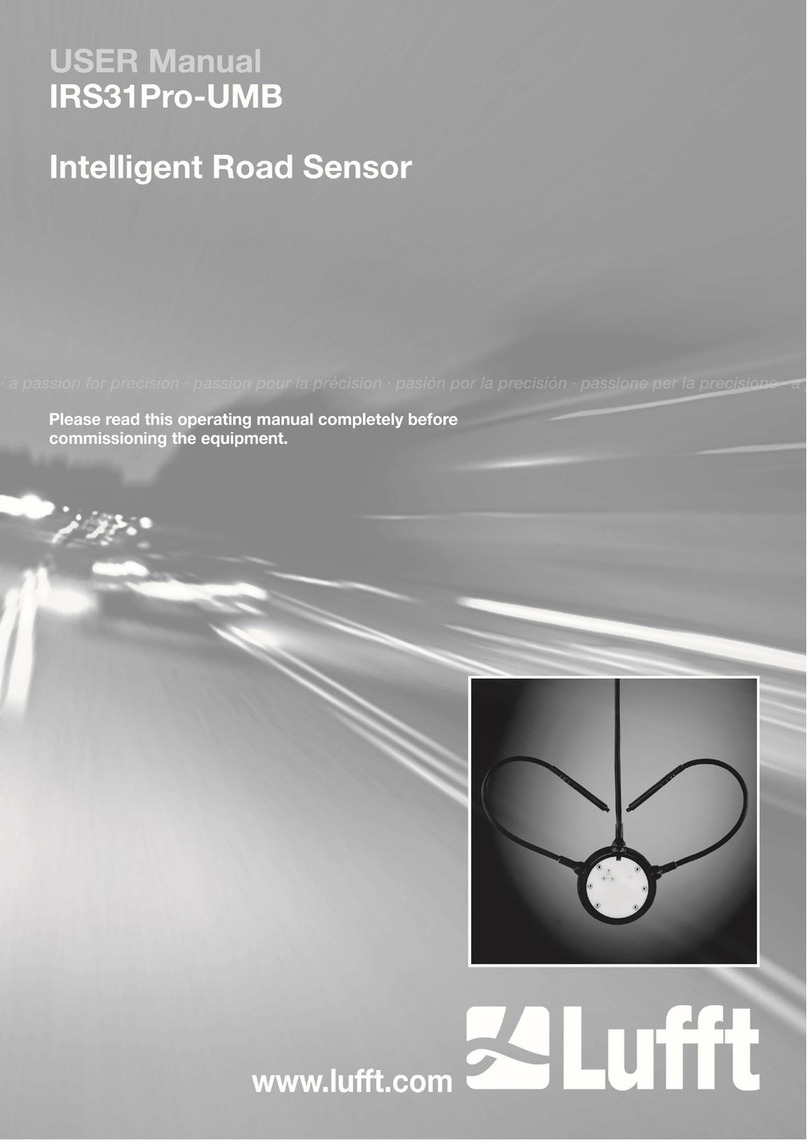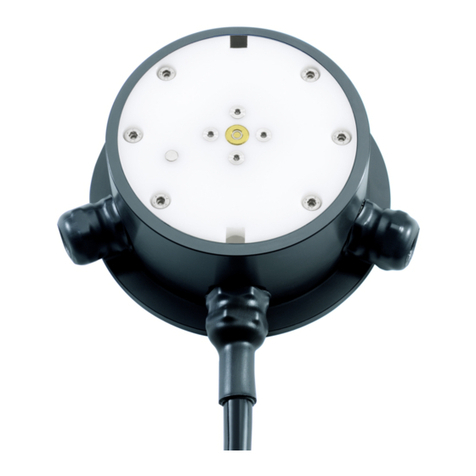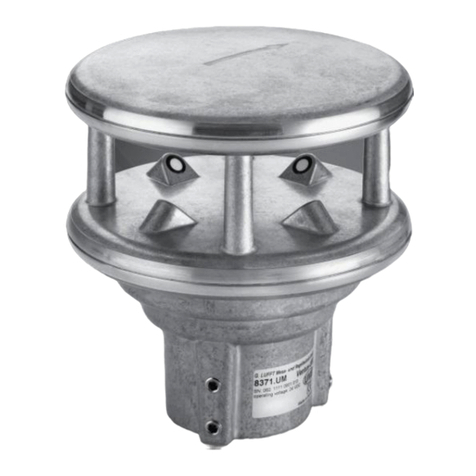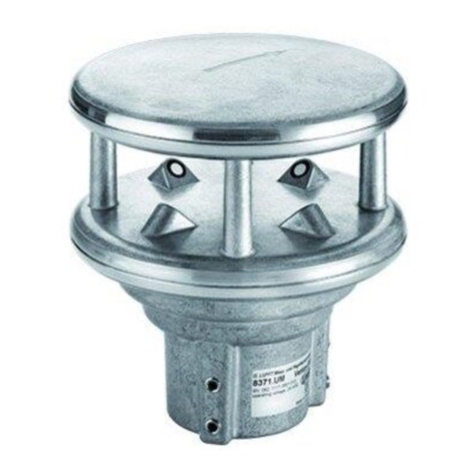Operating Manual ARS31-UMB
G. Lufft Mess- und Regeltechnik GmbH, Fellbach, Germany 2
Contents
1Please read before commissioning ........................................................................................................3
1.1 Symbols used.....................................................................................................................................3
1.2 Safety instructions ..............................................................................................................................3
1.3 Designated use...................................................................................................................................3
1.4 Guarantee...........................................................................................................................................3
1.5 Incorrect use.......................................................................................................................................3
1.6 Nomenclature .....................................................................................................................................3
2Device description ..................................................................................................................................4
2.1 Method of operation............................................................................................................................4
2.2 Availability of measurement values....................................................................................................5
3Installation...............................................................................................................................................6
3.1 Preparation.........................................................................................................................................6
3.2 Installation...........................................................................................................................................6
3.3 Connecting the cable..........................................................................................................................7
3.4 Commissioning and testing ................................................................................................................9
4Maintenance.........................................................................................................................................10
4.1 Replacing the sensor system ...........................................................................................................10
4.2 Connections......................................................................................................................................11
5Configuration ........................................................................................................................................12
5.1 Factory settings ................................................................................................................................12
5.2 Using PC configuration software......................................................................................................12
5.3 Firmware update...............................................................................................................................14
6Communication.....................................................................................................................................15
6.1 Binary protocol..................................................................................................................................15
6.2 ASCII protocol...................................................................................................................................17
6.3 Channel assignment for the data request ........................................................................................18
6.4 Mapping standards...........................................................................................................................20
7Technical data ......................................................................................................................................21
7.1 Measurements..................................................................................................................................21
7.2 Storage conditions (complete sensor)..............................................................................................21
7.3 Operating conditions.........................................................................................................................21
7.4 Electrical data...................................................................................................................................21
7.5 Interfaces..........................................................................................................................................22
7.6 Mechanical data (excluding cable)...................................................................................................22
8EC Certificate of Conformity.................................................................................................................23
9Troubleshooting....................................................................................................................................24
10 Service and maintenance.....................................................................................................................25
11 Disposal................................................................................................................................................25
12 Manufacturer.........................................................................................................................................26
12.1 Technical support .............................................................................................................................26
Version history:
